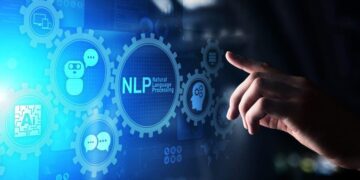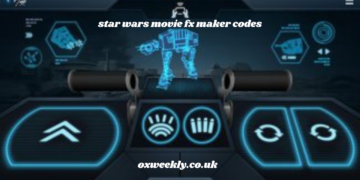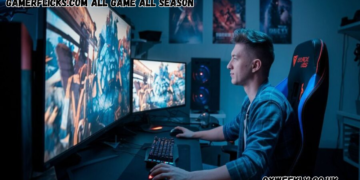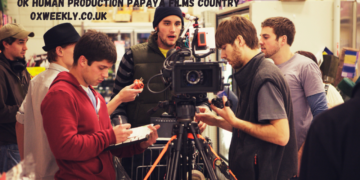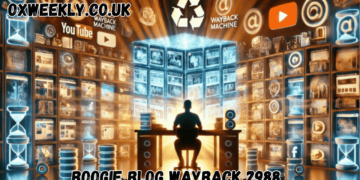The Star Wars franchise has long been a pioneer in groundbreaking visual effects, creating unforgettable worlds and battles that have captured audiences for decades. At the heart of these stunning visual effects (FX) lies a complex network of technologies, software tools, and techniques—one of which is the “Star Wars Movie FX Maker Codes.” This article will delve into the intricate world of these codes, exploring how they work, how they have evolved over time, and how modern filmmakers continue to use them to bring the Star Wars universe to life.
What are Star Wars Movie FX Maker Codes?
When we talk about Star Wars Movie FX Maker Codes, we are referring to the various scripts, programs, and digital tools used to generate the visual effects seen on screen in Star Wars films. The term itself is a bit of a catch-all for a variety of technologies, from CGI (Computer-Generated Imagery) to practical effects like model-making and pyrotechnics. However, at its core, the focus is on the use of sophisticated computer algorithms and programming techniques that allow filmmakers to create the stunning visual effects that have become synonymous with the franchise.
The Star Wars series has always been on the cutting edge of movie-making technology. From the use of miniatures to the groundbreaking CGI work in The Phantom Menace and beyond, Star Wars has consistently pushed the envelope in terms of what is possible with visual effects. FX Maker Codes play an essential role in this process, enabling studios to craft realistic explosions, intergalactic dogfights, alien creatures, and expansive space battles.
The Evolution of Visual Effects in Star Wars
To truly appreciate the importance of FX Maker Codes, it is essential to understand how visual effects have evolved within the Star Wars universe. The original Star Wars movie, released in 1977, revolutionized cinema by introducing groundbreaking special effects techniques. George Lucas, the mastermind behind Star Wars, founded Industrial Light & Magic (ILM) to create the effects for his space epic. At that time, ILM relied on a combination of practical effects and early forms of computer animation.
Over the decades, ILM continued to refine its methods, pushing the boundaries of what was possible with special effects. As digital technology advanced, so did the use of computer-generated imagery (CGI), allowing filmmakers to create increasingly sophisticated effects. Today, the visual effects used in Star Wars films are a perfect blend of traditional techniques and cutting-edge digital technology.
The Star Wars saga saw the introduction of iconic effects such as the lightsaber battles, the iconic space battles between the Rebel Alliance and the Empire, and the portrayal of vast alien worlds. Each of these effects was built upon layers of complex coding and software designed to make the universe feel real and immersive. This is where the concept of FX Maker Codes becomes significant: these specialized computer scripts, written by teams of experts, help automate and streamline the creation of these complex effects.
How Star Wars Movie FX Maker Codes Work
FX Maker Codes work through a combination of scripting languages, animation software, and 3D modeling tools. These codes are written by teams of visual effects artists, animators, and software developers. The process begins with the development of a concept and storyboard for a particular scene. Once the general direction for the scene is decided, the FX team begins to build the necessary visual elements using various software tools.
One common software tool used in the Star Wars films is Autodesk Maya. Maya is an advanced 3D animation and modeling program that allows artists to create highly detailed models, environments, and animations. To bring these models to life, FX Maker Codes are written to control elements such as motion, lighting, textures, and effects like explosions or particle systems. The process of writing these codes is highly technical, as the team needs to ensure that the effects behave in a realistic way within the constraints of the scene.
For example, when creating a lightsaber duel, the lightsaber blade itself is generated through a combination of 3D models, particle effects, and coding to simulate the glowing blade. In addition to that, the reflection on the actors’ costumes, the movement of the blade during combat, and the interaction with the environment are all handled by complex algorithms that ensure the saber feels like a physical object.
Key Software Tools for Star Wars FX Creation
Behind the magic of Star Wars movie FX lies a number of essential software tools and programs. These tools help bring the creator’s vision to life by allowing artists to create and refine the visual elements required for the movie. Below are some key tools used to develop the visual effects for the Star Wars franchise:
- Autodesk Maya: This powerful 3D modeling software is widely used in the industry for everything from character animation to complex simulations. It is a core tool for creating detailed 3D models, environments, and digital effects. Many of the characters, ships, and planets in Star Wars are modeled in Maya before being brought to life with FX Maker Codes.
- Adobe After Effects: Often used for post-production visual effects, After Effects helps create intricate particle effects, compositing, and other special effects that complement the work done in 3D software.
- Pixar’s RenderMan: RenderMan is a rendering software that plays a crucial role in bringing the visual effects to life by converting 3D models into photorealistic images. It is used extensively for the final rendering process, particularly in creating realistic textures and lighting for Star Wars environments and characters.
- SideFX Houdini: This software is particularly useful for creating advanced simulations, such as explosions, fire, and fluid dynamics. Houdini’s procedural approach allows artists to create complex effects with a high degree of control. It has been used in Star Wars to create realistic space battles, large-scale explosions, and environmental effects.
- Blender: Although less common in large-scale studios like ILM, Blender has gained popularity in recent years as a free and open-source alternative to expensive software. Some smaller Star Wars projects or fan-created content may use Blender to design characters or scenes.
Behind-the-Scenes: The Importance of Teamwork in FX Creation
While the technology is essential, the collaboration between different departments is equally important in creating Star Wars visual effects. Filmmakers, including directors, producers, and visual effects supervisors, work closely with artists, animators, and software engineers to ensure that every effect fits seamlessly into the larger narrative. The FX teams work in tandem with the sound department, set designers, and costume departments to make sure that each visual element aligns with the overall aesthetic and storytelling of the film.
The coordination required is immense, and it’s often a race against the clock to meet deadlines. Since Star Wars films are known for their intricate visual details, this collaborative process is crucial to maintaining the consistency and realism that fans expect. It’s not just about creating effects that look cool; it’s about ensuring that every visual component enhances the storytelling and fits within the fictional universe.
The Future of Star Wars Movie FX Maker Codes
As technology continues to advance, the future of Star Wars visual effects looks brighter than ever. With the rise of virtual reality (VR), augmented reality (AR), and AI-assisted tools, the potential for new kinds of visual effects is limitless. In fact, many believe that the future of Star Wars could involve even more immersive experiences, where fans can interact with the galaxy far, far away like never before.
The evolution of FX Maker Codes will continue to be a driving force behind this change. With the integration of AI-driven automation, the process of generating complex effects may become faster, more intuitive, and even more realistic. This will open up new possibilities for creators to explore, whether they are making films, video games, or virtual reality experiences.
Conclusion
The Star Wars Movie FX Maker Codes are at the heart of the incredible visual magic that defines the franchise. From the early days of practical effects to the modern use of advanced computer-generated imagery, these codes have allowed Star Wars to remain at the forefront of cinematic technology. As the industry continues to evolve, these codes will no doubt play a significant role in shaping the future of visual storytelling, bringing even more awe-inspiring visuals to the Star Wars universe for generations to come.
In the end, the FX Maker Codes are not just a collection of lines of code or scripts—they represent the collective imagination, creativity, and technical prowess that continues to breathe life into the Star Wars galaxy, ensuring its place in cinematic history.





